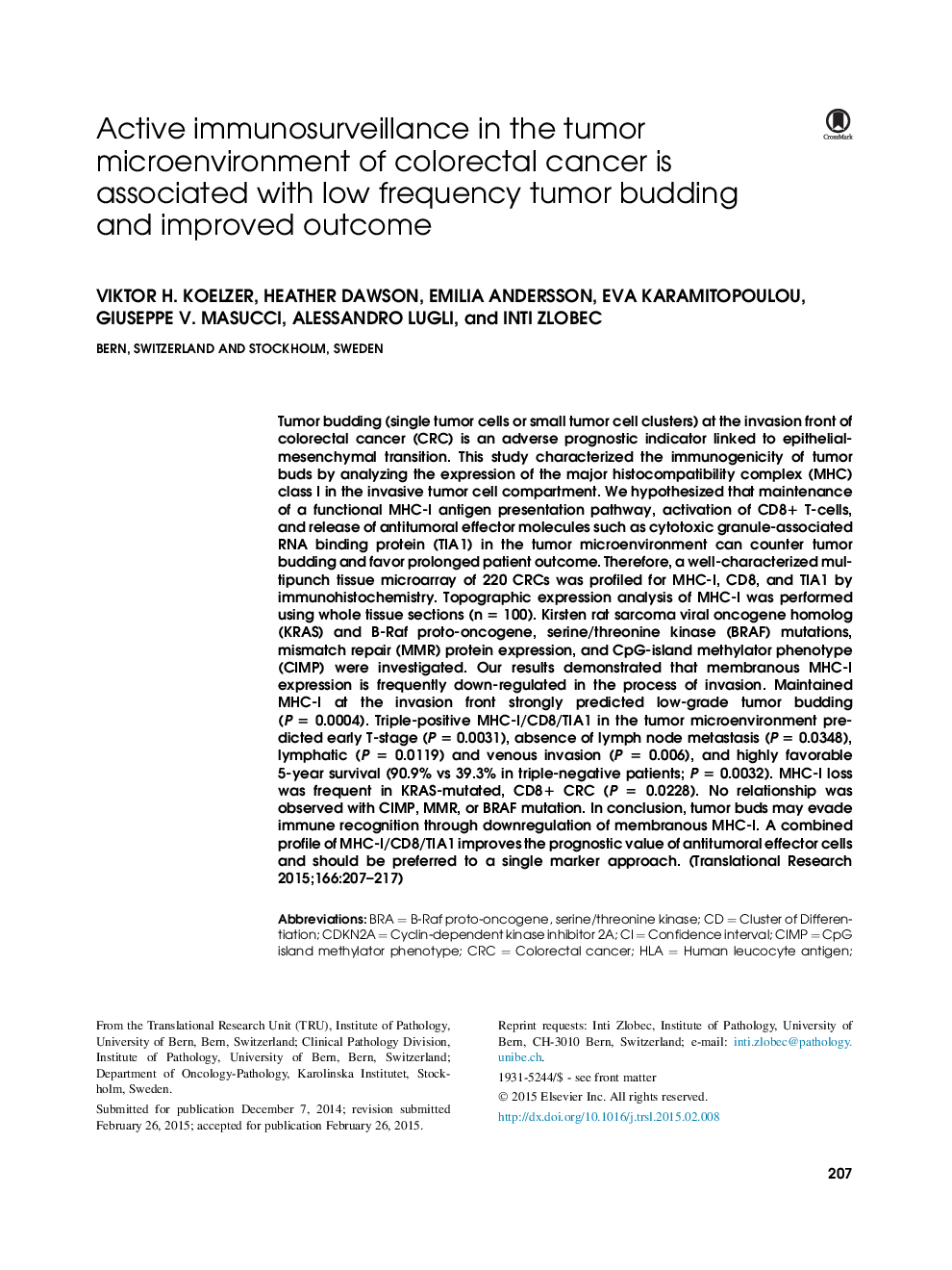| کد مقاله | کد نشریه | سال انتشار | مقاله انگلیسی | نسخه تمام متن |
|---|---|---|---|---|
| 3840132 | 1247890 | 2015 | 11 صفحه PDF | دانلود رایگان |
Tumor budding (single tumor cells or small tumor cell clusters) at the invasion front of colorectal cancer (CRC) is an adverse prognostic indicator linked to epithelial-mesenchymal transition. This study characterized the immunogenicity of tumor buds by analyzing the expression of the major histocompatibility complex (MHC) class I in the invasive tumor cell compartment. We hypothesized that maintenance of a functional MHC-I antigen presentation pathway, activation of CD8+ T-cells, and release of antitumoral effector molecules such as cytotoxic granule-associated RNA binding protein (TIA1) in the tumor microenvironment can counter tumor budding and favor prolonged patient outcome. Therefore, a well-characterized multipunch tissue microarray of 220 CRCs was profiled for MHC-I, CD8, and TIA1 by immunohistochemistry. Topographic expression analysis of MHC-I was performed using whole tissue sections (n = 100). Kirsten rat sarcoma viral oncogene homolog (KRAS) and B-Raf proto-oncogene, serine/threonine kinase (BRAF) mutations, mismatch repair (MMR) protein expression, and CpG-island methylator phenotype (CIMP) were investigated. Our results demonstrated that membranous MHC-I expression is frequently down-regulated in the process of invasion. Maintained MHC-I at the invasion front strongly predicted low-grade tumor budding (P = 0.0004). Triple-positive MHC-I/CD8/TIA1 in the tumor microenvironment predicted early T-stage (P = 0.0031), absence of lymph node metastasis (P = 0.0348), lymphatic (P = 0.0119) and venous invasion (P = 0.006), and highly favorable 5-year survival (90.9% vs 39.3% in triple-negative patients; P = 0.0032). MHC-I loss was frequent in KRAS-mutated, CD8+ CRC (P = 0.0228). No relationship was observed with CIMP, MMR, or BRAF mutation. In conclusion, tumor buds may evade immune recognition through downregulation of membranous MHC-I. A combined profile of MHC-I/CD8/TIA1 improves the prognostic value of antitumoral effector cells and should be preferred to a single marker approach.
Journal: Translational Research - Volume 166, Issue 2, August 2015, Pages 207–217
